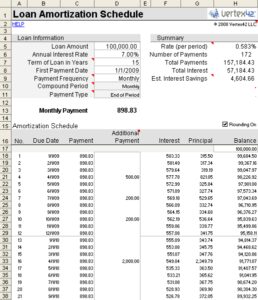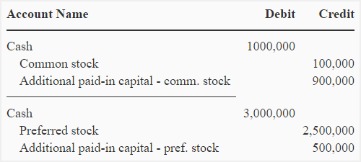How to Calculate Profit Margin for Your Small Business: 3 Steps
Content
Some examples include raw materials, labor wages, and factory overhead expenses. Stacy, an analyst at an investment firm, is considering the profitability of two manufacturing companies; Alpha Corp and Beta Corp. Therefore their profit margins should be comparable to one another. She reviews the companies’ income statements and takes note of the following figures.

Some of these factors include the number of employees you have, business location, type of business, size, how you manage inventory, and your operating systems. Margins can also be used to identify areas of a company’s operations that may be inefficient or not cost effective. By analysing the profitability of different product lines, companies can identify areas where costs are too high in relation to the profits generated. This information can then be used to optimise operations and reduce costs.
Net profit margin vs. gross profit margin
Operating Profit Margin differs across industries and is often used as a metric for benchmarking one company against similar companies within the same industry. It can reveal the top performers within an industry and indicate the need for further research regarding why a particular company is outperforming or falling behind its peers. From there, you can effectively price your products and start
profiting off each sale. Generally, a 5% net margin is poor, 10% is okay, while 20% is considered a good margin. There is no set good margin for a new business, so check your respective industry for an idea of representative margins, but be prepared for your margin to be lower.
This information can be used to make informed investment decisions. However, the company’s management has a great deal of discretion in areas such as how much they choose to spend on office rent, equipment, and staffing. Therefore, a company’s operating profit margin is usually seen as a superior indicator of the strength of a company’s management team, as compared to gross or net profit margin. As mentioned above, the gross profit margin is the percentage of profit left after COGS gets subtracted from net sales.
Are There Other Profit Margin Formulas?
He provides a service for cutting customers’ lawns, trimming bushes and trees, and clearing lawn litter. A high profit margin is one that outperforms the average for its industry. According to CFO Hub, retailers’ average gross profit margin is 24.27%.
- This example illustrates the importance of having strong gross and operating profit margins.
- Key metrics are often ones where a company’s performance – as indicated by the metric – is substantially different (whether better or worse) from that of most of its competitors.
- Net profit margin is a great indicator of the financial health of a company, partly because it factors in all business activities.
- Profit margin is also used by businesses and companies to study the seasonal patterns and changes in the performance and further detect operational challenges.
- Finally, profit margins are a significant consideration for investors.
- That means, for every unit sold, $6 goes to fixed costs and profit.
A very costly item, like a high-end car, may not even be manufactured until the customer has ordered it, making it a low-expense process for the maker, without much operational overhead. There are other key profitability ratios that analysts and investors often use to determine the financial health of a company. For example, return on assets (ROA) analyzes how well a company deploys its assets to generate a profit after factoring in expenses. A company’s return on equity (ROE) determines a company’s return on shareholder equity, meaning its assets minus its debts. Does your business regularly buy and use the same supplies over and over?
How to increase your profit margin + 6 best practices
While a common sense approach to economics would be to maximize revenue, it should not be spent idly — reinvest most of this money to promote growth. Pocket as little as possible, or your business will suffer in the long term! Smaller businesses, like a local retail store, may need to provide it for seeking (or restructuring) a loan from banks or other lenders. Are there any parts of the business process that you can automate? No matter what type of business you run, taking more time costs more money.

Then divide this figure by net sales, to calculate the gross profit
margin in a percentage. Profit margin is a common measure of the degree to which a company or a particular business activity makes money. Expressed as a percentage, it represents the portion of a company’s sales revenue that it gets to keep as a profit, after subtracting all of its costs. For example, if a company reports that it achieved a 35% profit margin during the last quarter, it means that it netted $0.35 from each dollar of sales generated. The net profit margin reflects a company’s overall ability to turn income into profit. The infamous bottom line, net income, reflects the total amount of revenue left over after all expenses and additional income streams are accounted for.
What Is Revenue? A Quick Refresher
A geographic area can also alter margins for businesses in the same industry. For example, a tech company in San Francisco will have wildly different rent and payroll costs than a tech company in Dallas. First, some companies are inherently high-margin or low-margin ventures. They have high expenses, as they need to purchase inventory, employ corporate employees and labor workers, facilitate shipping and distribution, and rent bigger facilities as their sales grow.
- There is a gross profit margin (bigger) and a net profit margin (smaller).
- Brex Treasury is not a bank nor an investment adviser and your Brex business account is not an FDIC-insured bank account.
- However, this depends on what type of profit margin (e.g., operating, gross, etc.) you want to calculate.
- By contrast, operating expenses refer to the costs that keep your business up and running.
- The omission of interest and taxes is helpful because a leveraged buyout would inject a company with completely new debt, which would then make historical interest expense irrelevant.
- In addition, this type of financial analysis allows both management and investors to see how the company stacks up against the competition.
Using what you learned from your customer research will help you judge how much customers will pay for your product. Customer research gives you a clear picture of the income and spending habits of your target consumer. This information will help you predict your potential buyers’ price sensitivity. Combine that knowledge with the retail price of similar products in your target stores to set a selling price. With growth, you’ll face added costs for marketing, sales staff, and inventory management.
What Are the Different Types of Profit Margins?
Expressed as a percentage, it indicates how much profit the company makes for every dollar of revenue generated. Profit margin is important because this percentage provides a comprehensive picture of the operating efficiency of a business or an industry. All margin changes provide useful indicators for assessing growth potential, investment viability and the financial stability of a company relative to its competitors. Maintaining a healthy profit margin will help to ensure the financial success of a business, which will improve its ability to obtain loans.
- Instead of accounting for just the direct cost of creating and selling a product like gross profit margin, net profit margin accounts for all expenses.
- Investing in securities products involves risk and you could lose money.
- When you buy in bulk, you pay less on average per item, which further decreases expenses and increases the profit made on each sale.
- Here are a few scenarios across various industries to help you practice.
However, it does not include debt, taxes, and other non-operational expenses. Basically, your operating margin will show you your earnings from operating activities. Typically, the gross profit margin equation is used Profit Margin Formula to determine the profit margin of a single service or product, allowing you to see the amount of revenue you keep on each item. It is not usually used for calculating the profit margin for the business as a whole.
Consider the amount of time needed to sell 3,000 jars to make a profit and the feasibility of doing so. Put simply, it measures the amount of net profit per pound of revenue. Net profit margin is a great indicator of the financial health of a company, partly because it factors in all business activities. By tracking the rise and fall of your company’s net profit margin, you can tell what’s working, what isn’t, and forecast future profits based on revenues.
- The company’s net profit margin is 60%, meaning they keep 60% of the money the business makes from selling those shoes.
- The break-even point is a major inflection point in every business and sales organization.
- Keep reading to find out how to find your profit margin and what is the gross margin formula.
It will take time to finalize decisions about recipe formulation, packaging, label, and distribution before the business generates income. That’s why it’s a good https://kelleysbookkeeping.com/ idea to have a solid grasp on the concept of the ‘net profit margin’. It’s a marker of your profitability, stability, and how attractive you are to investors.


